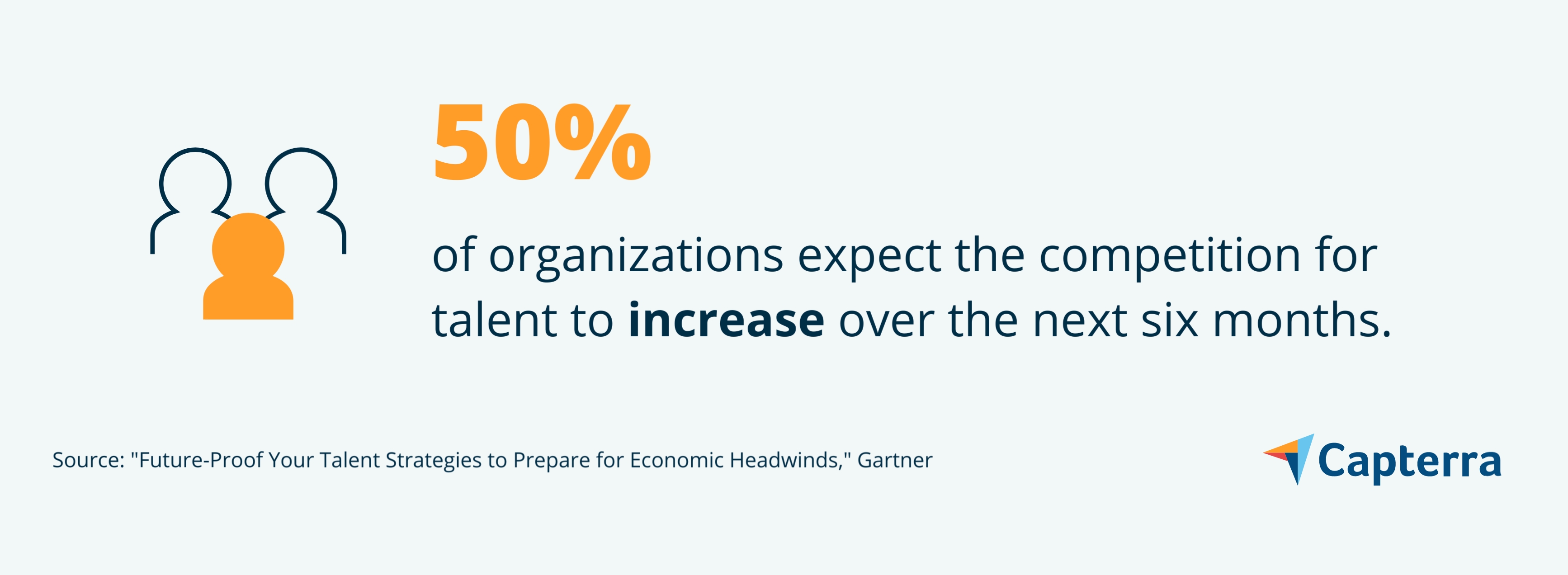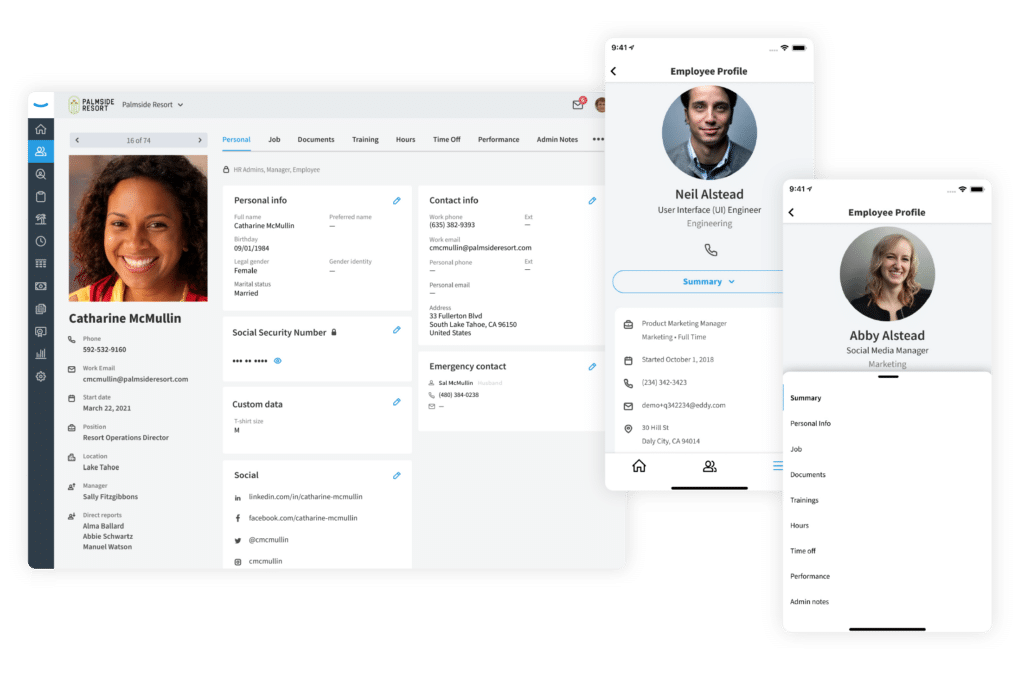Attract former high performers back to your organization in four steps.
Recruiters: Are you looking for new sourcing strategies to bring more qualified candidates to your organization?
If you haven’t tailored your recruiting strategy to attract former employees back to your workplace, you could be missing out on a significant portion of the talent pool.
According to Gartner, more than a third (35%) of candidates would be interested in outreach from their previous organization about open roles[1]. However, many businesses fail to tailor their recruiting strategy to appeal to ex-employees.
If you’re a recruiting director who’s interested in adding former employees to your talent pool in order to increase your chances of making a high-quality hire, you need to replace your ad-hoc outreach methods with a standardized set of best practices for recruiting boomerang employees.
With input from the Head of Resourcing at Oxford Health NHS Foundation Trust, Tara O’Brien[2], we’ve outlined four steps you can take to turn past employees into high-performing boomerang workers below.
/ What is a boomerang employee?
A boomerang employee is an individual who voluntarily leaves a company they work for, but is hired back sometime later to work for the company again.
What are the pros and cons of hiring boomerang employees?
Pros | Cons |
|---|---|
High likelihood of a culture fit | May need time to reacclimate if the organization’s policies, structure, or culture has changed |
Familiarity with the organization’s internal operations and processes | Potential to bring toxicity into the workplace if they left on a bad note |
New skills, experiences, and connections brought to the organization upon their return | Unconscious bias could cause them to be rehired, even if they aren’t the best fit |
Ready to hire a recruiting agency for your business needs? Browse our list of companies in the following areas:
How to recruit boomerang employees
Short on time? Watch this short video summary of the steps outlined below.
1. Add exit interviews to your offboarding process
Recruiting boomerang employees begins with your offboarding process. Boomerang hires are typically employees who voluntarily left the organization (as opposed to those who were terminated), so it’s important to uncover the reasons behind employees’ departures.
O’Brien puts it like this:
...you've got to get beneath the surface of the real reason why they left in the first place, because if you don't then you risk that issue coming up again in the future.


Tara O'Brien
Head of Resourcing at Oxford Health NHS Foundation Trust
Employees who leave their employer on good terms show the most interest in returning. For example, Gartner reports that nearly a third (29%) of employees who left feeling energized by their former job are willing to boomerang[1]. By contrast, less than a fifth (18%) of employees who felt burnt out or underappreciated at their former employer would consider returning.
All this to say, understanding an employee’s feelings toward your organization at the time of their departure can help you determine whether there’s potential for them to return in the future. Exit interviews provide the best opportunity to uncover this information, but according to a Capterra survey*, 86% of HR workers say at least one employee didn’t show up to their exit interview, and 70% say multiple employees didn’t show up.
Opting for an anonymous survey instead of a face-to-face conversation can encourage departing employees to be honest about the reason behind their leaving—employee pulse survey tools work well for this.
Find more actionable tips for increasing exit interview participation in our related content, An Offboarding Ordeal: HR Departments Say Departing Employees Consistently Ghost Exit Interviews, Steal Company Equipment.
2. Migrate past employees’ information to a post-employment database
In order to stay in touch with former employees, you need to keep their information up to date and readily available. Most businesses use HR software to create and catalog employee profiles and applicant tracking systems to manage talent pools, but former employees don’t exactly fit into either of these categories.
O’Brien suggests creating a separate candidate funnel and talent pipeline for former employees that have the potential to come back to the organization in the future. She says:
It needs to be a separate funnel and talent pipeline than what you have set up for external candidates, because you need to interact with the people in those pools in different ways.
Tara O'Brien
Make migrating departing employees’ information to a separate database a part of your offboarding process. Include their phone number, email address, links to their social profiles (such as LinkedIn), and any resumes they have on file. Doing this will essentially create a talent pool of previous employees that you can use for future recruiting efforts.
In order to ensure you have relevant, up-to-date contact information, we suggest prompting departing employees to share an email address and/or phone number they can be reached at in the future in your exit interview survey.
Need help finding the right system to store this information? Recruiting platforms and applicant tracking systems are usually built with candidate database features. Discover the top tools in these categories by browsing the Capterra Shortlist for recruiting software.
3. Create recruitment marketing campaigns targeting former employees
As O’Brien mentioned above, how recruiters interact with former employees should differ from the strategies used to attract new talent. While a promotional post for a job opening may be enough to attract new talent to your organization, boomerangs need more. For example, if your organization has introduced an entirely new role or perk since their departure, that’s the kind of information worth promoting to previous employees.

A recruiting campaign for Methodist University Hospital features a rehire testimony[4]
You can use the same outreach methods to recruit boomerang employees as you would other talent; simply tailor the message to appeal to former employees. For instance, you’ll still want to make posts for career websites and send emails to these candidates—this is where the contact information in the former employee talent pool we talked about earlier pays off. We suggest looking into recruitment marketing software for help developing and managing these campaigns.
As O'Brien says:
You’re keeping those touchpoints alive—you’re keeping that relationship alive so that when there’s a new opportunity that suits them, they now have all of these new skills that they can bring back to the organization.
Tara O'Brien
/ Tip
Try inviting former employees to a company alumni group on a website such as LinkedIn. This will provide you with an appropriate platform for engaging with and recruiting former employees.
4. Improve your employer value proposition
Lastly, whether you’re appealing to a new hire or a returning employee, the best way to recruit talent (and improve employee retention) is to strengthen your employer brand. This will provide you with fodder for your recruitment marketing efforts, but more importantly, it improves your company culture and employee experience, making it one of the most effective ways to attract and retain top performers.
Analyze the results from exit interview surveys to determine whether there are recurring themes related to why employees leave. Are they seeking more competitive compensation or robust benefit packages? Do they want flexible working arrangements? When it comes to making adjustments to your employee value proposition (EVP), the most impactful changes you can make are the ones based on feedback from former employees.
Learn how to craft a strong employer value proposition: How to Build a Company Culture to Compete Against Big Brands for Talent
Capterra’s 2022 Company Culture Survey** asked 958 employees to rank 14 factors’ influence on their job satisfaction. Compensation was the factor that had the highest impact on job satisfaction overall, followed by job security, work-life balance, perks and benefits, and opportunities to advance their career.
Based on these results, we suggest auditing your organization’s compensation structure, flexible work arrangements, PTO policy, and development opportunities when considering how to improve your employer brand. For the latter, check out our free, downloadable career pathing template.
Level up your recruiting strategy with these resources
When The Great Resignation began in spring of 2021, many businesses’ hiring struggles were exacerbated. And based on research from Gartner, the challenges continue[5].

Recruiting boomerang employees might be the piece that’s missing from your current recruitment strategy. Follow the four steps outlined in this guide to start attracting former employees and strengthening your ability to endure today’s competitive hiring conditions:
Use exit interview surveys to understand why employees leave your organization.
Migrate former employees’ information to a distinct talent pool.
Create recruitment marketing campaigns that target former employees.
Improve your employer value proposition.
When asked for any final thoughts she has on boomerang employees, here’s what O'Brien had to say:
I think sometimes people leave an organization thinking the grass is greener [elsewhere], and then they discover that maybe it’s equally green or it’s not as green. And actually, that brings a level of maturity that they carry with them when they come back to the organization.
Tara O'Brien
For more recruiting-related advice, check out these resources:
Modern Recruiting Metrics: A Fresh Approach for Setting Headcount Goals
A Playbook for Company Culture Transformation: Why, What, and How
Note: Questions and responses have been edited for brevity and clarity.


